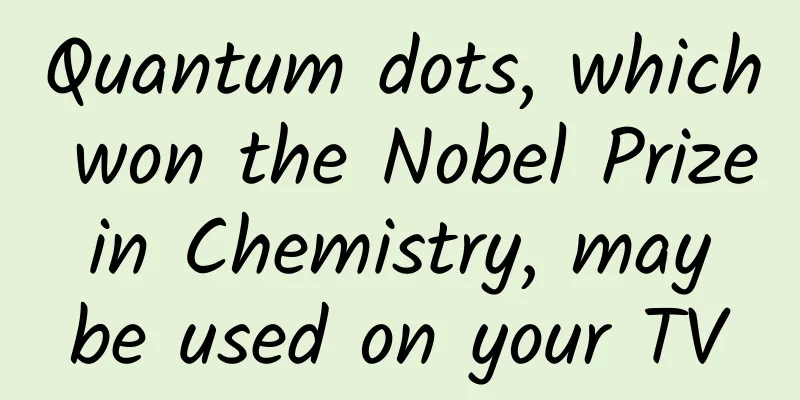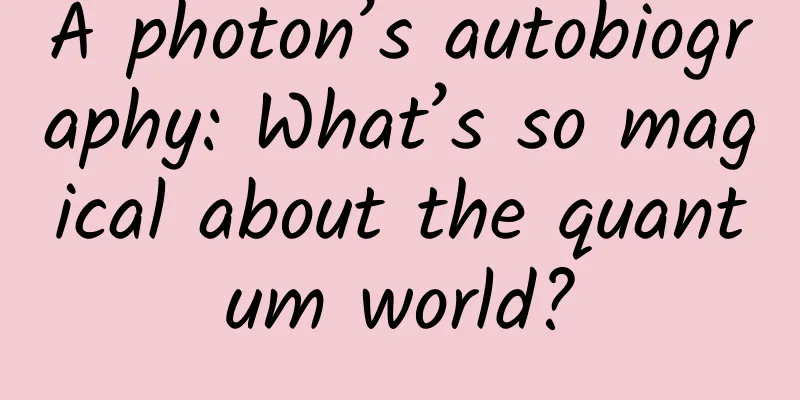Quantum dots, which won the Nobel Prize in Chemistry, may be used on your TV

|
At around 5:45 pm on October 4th, Beijing time, the Royal Swedish Academy of Sciences decided to award the 2023 Nobel Prize in Chemistry to American scientists Moungi G. Bawendi (Massachusetts Institute of Technology), Louis E. Brus (Columbia University), and Russian scientist Alexei I. Ekimov (NanoCrystal Technologies, Inc.) in recognition of their discovery and research on quantum dots. The individual prize money for the 2023 Nobel Prize is 11 million Swedish kronor (approximately RMB 7.2258 million), an increase of 1 million Swedish kronor compared to last year. 01 Brief introduction of the winners Moungi G. Bawendi was born in Paris, France in 1961. He graduated from the University of Chicago, Illinois, USA with a Ph.D. in 1988. He is a professor at the Massachusetts Institute of Technology (MIT) in Cambridge, Massachusetts, USA. Louis E. Brus was born in Cleveland, Ohio, USA in 1943. He received his Ph.D. from Columbia University, New York, USA in 1969. He is a professor at Columbia University, New York, USA. Alexei I. Ekimov was born in the Soviet Union in 1945. He graduated from the Joffe Institute of Physical Technology in St. Petersburg, Russia, with a doctorate in 1974. He moved to the United States in 1999 and worked in private companies. He was the chief scientist of Nanocrystals Technology Inc. in New York, USA. 02 What are quantum dots? When talking about quantum dots, the following picture will undoubtedly come to mind. In the dark, under the irradiation of ultraviolet light, the solutions in a row of test tubes emit pure light from blue to red, which is breathtaking. So, what are quantum dots? Why can quantum dots emit such brilliant colors? ▲Fluorescent photo of quantum dots (Photo source/TV Common Sense Lecture: What are quantum dots?) Whether it is a stone or a grain of sand, it is made up of atoms or molecules. A grain of sand is much smaller than a stone, but the physical and chemical properties are almost the same. However, when the size of the material enters the nanoscale, things begin to change. "Quantum dots have many fascinating and unusual properties. Importantly, they have different colors depending on their size." said Johan Åqvist, chairman of the Nobel Committee for Chemistry. What we call quantum dots, also known as semiconductor nanocrystals, are semiconductor crystal particles composed of hundreds or thousands of atoms and generally less than 20 nanometers in size. Semiconductor materials are the cornerstone of the information society and are generally composed of crystals with a repeating unit structure. Their semiconductor properties are determined by the type of repeating unit. As the size of quantum dots enters the nanoscale, the number of repeating units inside semiconductor nanocrystals is limited, resulting in a significant change in the electronic structure of the material. Brus, Ekimov and others described this size-related phenomenon as the quantum confinement effect: the electronic structure of quantum dots changes from the continuous energy band of the bulk material (macroscopic crystal) to discrete energy levels, and the band gap gradually increases as the crystal size decreases. At the same time, because the size of quantum dots is usually smaller than the Bohr radius of excitons (electron-hole pairs), the excitons generated by light excitation are firmly bound in each quantum dot, thereby achieving efficient radiative recombination. Taking the most widely studied cadmium selenide (CdSe) quantum dots as an example, the bulk cadmium selenide is a black powder and usually has no fluorescence effect; while the cadmium selenide quantum dots synthesized in solution can achieve multiple colors of light emission from blue to red by changing their size. ▲Structure diagram of spherical quantum dots (Photo source: The 18th CHTF Retech Coating and Quantum Dot Technology Summit Forum) 03 How are quantum dots in colloids made? Colloidal quantum dots are usually synthesized by high-temperature thermal decomposition of organometallic precursors. Simply put, the anion precursor is quickly injected into a high-temperature reaction solution containing a cationic precursor, so it is also called high-temperature hot injection. The reaction mechanism of this synthesis method is that the concentration of the reaction precursor is instantly supersaturated and exceeds the critical point of nucleation, and then a monodisperse crystal nucleus is quickly obtained, separating the nucleation process and growth process of the quantum dots, achieving rapid nucleation and slow growth of the quantum dots. ▲Quantum dot synthesis device (Image source: Today's New Materials) The synthesis of core-shell structured quantum dots by high temperature hot injection can be prepared by the apparatus shown in FIG2 , using a two-step method. The first step is to synthesize bare core quantum dots, which are then repeatedly extracted with organic solvents at room temperature, and then purified by removing the reaction solvent and byproducts through high-speed centrifugation. During purification, large and small bare core quantum dots can be removed by selecting different centrifugal speeds, leaving only bare core quantum dots of intermediate size and relatively uniform particle size. The second step is to redisperse the bare core quantum dots in the reaction solution and coat the surface shell. The fluorescence lifetime of organic fluorescent dyes is generally only a few nanoseconds. However, the fluorescence lifetime of quantum dots with direct band gaps can last for tens of nanoseconds, and the fluorescence lifetime of quantum dots with quasi-direct band gaps, such as silicon quantum dots, can last for more than 100 microseconds. In this way, under light excitation, most of the spontaneous fluorescence has decayed, while the fluorescence of the quantum dots still exists, and a fluorescence signal without background interference can be obtained. 04 Application of Quantum Dots The rich physical and chemical properties of quantum dots have attracted many scholars to devote themselves to it. After unremitting exploration of basic research, many important cutting-edge technologies have been formed. For example, the efficient and stable luminescence characteristics of quantum dots make them a classic type of fluorescent labeling material. In the field of biological detection and medical imaging, they are widely used in scientific research and in vitro detection, promoting the development of imaging and detection technology. On the other hand, quantum dots have the characteristics of narrow emission and adjustable luminescence color, making them a new generation of luminescent material system in the display field. At the same time, the application of quantum dots in the fields of solar cells, infrared detection imaging, photocatalysis, quantum light sources, etc. has also made great progress. Among them, the most representative application is: combining the excellent photoluminescence performance of quantum dots with another Nobel Prize achievement - GaN-based blue light LED, to achieve quantum dot color enhancement liquid crystal display technology. In this technology, quantum dots can convert the color of LED backlight into high color purity red, green and blue primary colors, achieving a wide color gamut that exceeds traditional liquid crystal display and organic LED display. ▲TCL quantum dot TV (Image source: www.jiaoanw.com) ▲Schematic diagram of quantum dot TV imaging principle (Image source: www.modernart2008.cn) In addition to the currently commercialized quantum dot liquid crystal display, quantum dots have great application potential in future display, light source technology and new energy fields, such as : 1) Future Display: With the development of miniaturization, intelligence and flexibility of electronic devices, smart wearable devices are booming. Virtual reality applications require near-eye display devices to have high color gamut, high refresh rate and ultra-high resolution. Quantum dot electroluminescence (QLED) technology is expected to have all of the above characteristics. With the rapid development of quantum dots and other related semiconductor materials, QLED devices that meet commercial performance standards are expected to be realized in the next 3 to 5 years and be used in future displays. (2) Photovoltaic power generation: Solar energy, as a recognized clean energy, will be the leading technology of the next energy revolution. At present, the scientific research community and the industry are making every effort to improve the photoelectric conversion efficiency and reliability of photovoltaic cells. Quantum dot materials represented by PbS have great potential in the next generation of solution-processed solar cells due to their band gap adjustability in the infrared band. Combining quantum dot materials with other semiconductor photosensitive materials is an important technical route to achieve high-performance photovoltaic technology. (3) Application of high-performance laser light source: Laser technology is one of the important technologies in the development of modern optics, and has important applications in space communications, measurement, gyroscopes and military. The continuous spectral adjustability and high-efficiency luminescence performance of quantum dots are the core advantages of them as the material for the next generation of new lasers. At the same time, the low synthesis and preparation cost of quantum dots will also actively promote the miniaturization and civilian development of lasers. Both optically pumped lasers and electrically pumped lasers based on quantum dots are at the forefront of research in the field. (4) Application of single-photon light source: With the rapid development of quantum information and quantum communication technology, single-photon sources are one of the indispensable components of quantum information devices. Since single-particle quantum dots can be approximated as ideal two-level systems, they have unique advantages in the field of single-photon sources. At present, the most mature single-photon source devices are self-assembled quantum dots prepared by epitaxial growth and other methods. With the development of solution preparation and processing technology of quantum dots, it is expected that in the future, low-cost solution-synthesized quantum dots can be used as single-photon sources to prepare multi-band, high-efficiency, and low-cost quantum dot single-photon source arrays, providing new technologies for realizing quantum computing and quantum communication. 05 China’s strength in quantum dot research Compared with the international research that started in the 1980s, China started research in the field of quantum dots a little later. In recent years, through unremitting efforts, Chinese scientists have achieved original and leading results in research directions such as quantum dot synthesis, quantum dot light-emitting diodes (QLEDs), quantum dot virus labeling, and perovskite quantum dot display applications. Academician Li Yadong of Tsinghua University, Academician Li Yongfang of the Institute of Chemistry of the Chinese Academy of Sciences, Academician Wu Lizhu of the Institute of Chemistry of the Chinese Academy of Sciences, Professor Gao Mingyuan of Soochow University, and Professor Pang Daiwen of Nankai University were the first scholars to conduct research on quantum dots in China. After returning to China in 2009, Professor Peng Xiaogang joined Zhejiang University and devoted himself to the research and industrial development of excited state chemical regulation of quantum dots, and inspired a group of young scholars around him to engage in research in the field of quantum dots. In 2014, Professor Peng Xiaogang and Professor Jin Yizheng collaborated to report on a red QLED electroluminescent device with close to theoretical efficiency in Nature, which was selected as one of the top ten scientific advances in China that year. Since then, Chinese scholars have continued to work hard on QLED and continuously improve device performance. For example, Jin Yizheng's research group and Huang Fei's research group at South China University of Technology published a collaborative work in 2022, which pushed the performance of blue and white light devices to a level close to industrialization. In addition, Professor Zhong Haizheng of Beijing Institute of Technology and Professor Zeng Haibo of Nanjing University of Science and Technology became the first group of researchers in the world to carry out perovskite quantum dots. They have made representative research work on the photoluminescence and electroluminescence applications of perovskite quantum dots. In the 2021 Second Quantum Dot Chemistry, Physics and Applications Seminar held by Zhejiang University, more than 100 teachers and more than 500 students attended the meeting. China's research on quantum dots covers most research directions, and has formed a parallel and leading world level in some research. At the same time, with the support of the Ministry of Science and Technology, companies such as TCL, BOE, and Huawei have focused on quantum dot display technology, and technology innovation companies represented by Hangzhou Nanocrystal and Zhijing Technology are growing continuously. Compiled by reporter Zhang Hongwei Content sources: Beijing Daily, Global Science, "Science and Technology" WeChat public account, Today's New Materials, Academic Latitude and Longitude |
<<: After reading this article, you can also pick up meteorites in the wild!
Recommend
After checking in at so many volcanoes with the word "龖龘", I was given a special summer emergency safety guide
In the public's impression, volcanoes may hav...
After negotiations with Mercedes-Benz and BMW failed, Apple reportedly reached an agreement with Volkswagen on autonomous driving transformation
Apple has continued to advance its self-driving c...
Why don't woodpeckers get concussions even though they peck so hard?
Welcome to the 13th issue of the Nature Trumpet c...
Why does popping candy "pop"? Childhood questions solved!
For many people, one of the most unforgettable me...
Why are the lotus seeds I eat not sweet and delicious at all? I finally found the reason
July is the best time to enjoy lotus. Lotus has b...
Should the elderly get the COVID-19 vaccine? How to get it? One article explains!
Recently, the COVID-19 pandemic remains complex a...
How did NetEase's "Terminator 2" become popular in the App Store within a week?
"No matter how you hide, how you run, in the...
Global smartphone sales decline as Apple surpasses Xiaomi
[[432650]] According to preliminary data from the...
What? When the ancients created Chinese characters, they actually made these "wrong" characters?!
When talking about Chinese characters, one can of...
6 steps of data operation, from methodology to cases to get you started!
Analyzing operational data helps us further perfo...
Guide for maternal and child merchants to get the most out of Xiaohongshu!
As an encyclopedia for women, Xiaohongshu not onl...
Are NetEase’s 2017 H5s that went viral thoughtful enough?
From NetEase Cloud Music’s “Metro Music” screen-s...
5 major elements and 2 types of landing page design!
Normally, in the marketing process, many companie...
Using data to interpret "Ode to Joy 2" from all angles
As a data analysis enthusiast, the author of this...
World Hello Day丨I heard this is a new type of greeting opening line: "Are you an i-person or an e-person?"
"Are you an i person or an e person?" R...









